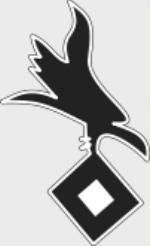The Motor Pool TMP7003 German Sd. Kfz. 181 PzKpfw VI Tiger I Ausf. E Heavy Tank - Panzer Division Hermann Goring (1:35 Scale)
"The gun and armor of the Tiger were superb, making it in many ways the most formidable tank in service. Even so, it was poor in maneuver, it was slow, and its turret was a slow traverser in action. It was a tank which was, at its best, immobile in ambush, when its killing power was very frightening."
- Douglas Orgill, "German Armor"
 The German Waffenamt issued an order to design the VK4501(H) (as the PzKpfw VI Ausf E was then known) in May 1941, just one month prior to the commencement of Operation Barbarossa. Interestingly, Henschel und Sohn of Kassel was charged with building the heavily armored chassis while Krupp, by far the largest munitionwerks in Germany, was given the task of developing the turret. The PzKpfw VI Ausfuhrung E (type E) was one of the first German tanks to feature a torsion bar with eight interleaved wheels, which was designed to support the mammoth 57-ton tank. The Ausf E mounted a huge 8.8cm KwK36 L/56 cannon and featured two MG34 machine guns for close support against enemy infantry. By war's end, 1,354 vehicles had been produced, some rolling off the Wegmann assembly line.
The German Waffenamt issued an order to design the VK4501(H) (as the PzKpfw VI Ausf E was then known) in May 1941, just one month prior to the commencement of Operation Barbarossa. Interestingly, Henschel und Sohn of Kassel was charged with building the heavily armored chassis while Krupp, by far the largest munitionwerks in Germany, was given the task of developing the turret. The PzKpfw VI Ausfuhrung E (type E) was one of the first German tanks to feature a torsion bar with eight interleaved wheels, which was designed to support the mammoth 57-ton tank. The Ausf E mounted a huge 8.8cm KwK36 L/56 cannon and featured two MG34 machine guns for close support against enemy infantry. By war's end, 1,354 vehicles had been produced, some rolling off the Wegmann assembly line.
Now The Motor Pool is proud to offer this stunning 1:35 scale diecast replica of the PzKpfw VI Tiger Ausf E. heavy tank, which is handpainted in a Mediterranean camouflage scheme and 'muddied' to give it a more weathered appearance. This particular Tiger tank was attached to the Panzer Divsion Hermann Goring when it fought in Sicily and Italy during 1943.
Sold Out!
Dimensions:
Length: 10 inches
Width: 4 inches
Height: 4 inches
Historical Account: Panzer Division Hermann Goring was established in May 1943 when Division Hermann Goring was reformed. It was sent to Sicily to fight the expected allied landings and became one of the few reliable Axis formations to remain in place after the Italian front collapsed on Sicily. It fought at Gela and Priolo but was forced to withdraw due to heavy Allied naval bombings. Despite suffering significant losses, the division continued fighting a defensive battle, which enabled other German forces to evacuate Sicily and take up the fight in Italy. The division was stationed near Naples when the Italian government surrendered to the Allies and was used to disarm the Italian troops in the Salerno area. After the Allies landed at Salerno on September 9th, the division was ordered back to the Volturno-Termoli Line. Later on, it retreated with the rest of the german forces to the nearly impregnable Gustav Line, where it was replaced in the front lines by infantry and ordered into tactical reserve.
When the Allies landed at Anzio on January 22nd, 1944, where it was used to encircle the Allied beachhead. It fought ferociously at Cisterna, fighting the Allies to a virtual standstill. It was redesignated
Fallschirm-Panzer Division Hermann Goring in April 1944 and continued to defend northern Italy until the end of the war.


